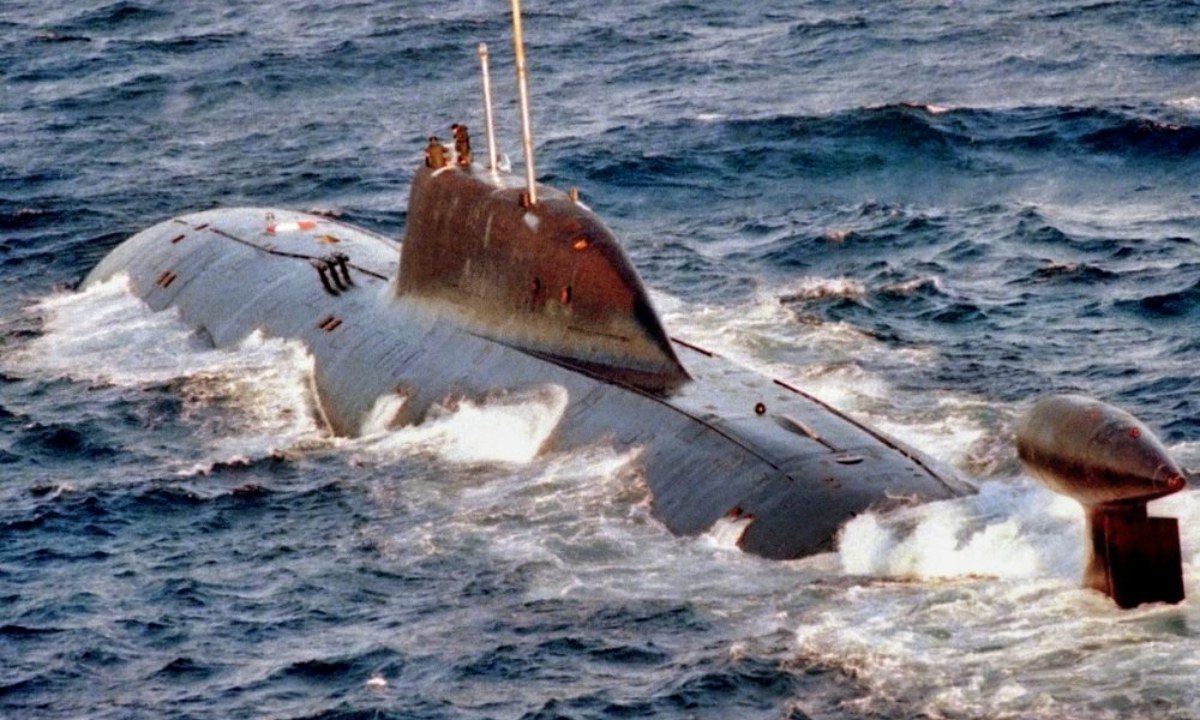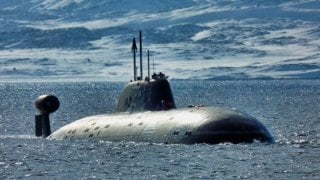Russia's Akula-Class Submarine Is a Nightmare for the U.S. Navy
The deployment of the Akula I-class Soviet nuclear-powered attack submarine in 1985 caught Western intelligence off guard, as they had not expected its arrival until a decade later.
Summary: The deployment of the Akula I-class Soviet nuclear-powered attack submarine in 1985 caught Western intelligence off guard, as they had not expected its arrival until a decade later. The Akula I-class has since become a cornerstone of Russian naval capabilities, renowned for its stealth and potency. Despite being quieter and faster than many of its contemporaries, the Akula remains a significant concern for the US Navy and its allies. With features designed for deep dives and equipped with advanced missiles, the Akula was originally intended to neutralize American ballistic missile submarines, thus playing a crucial role in Soviet nuclear war strategy. Today, despite maintenance challenges, the Akula-class submarines remain a formidable component of Russia's military, symbolizing national pride and ongoing strategic relevance.
Akula-Class Submarines: Russia's Stealth Warriors in the Depths
The deployment of the Akula I-class Soviet nuclear-powered attack submarine in 1985 was a moderate intelligence failure on the part of Western intelligence services.
These agencies had convinced themselves—and Western leaders—that the Russians would not be able to design and deploy the Akula I until 1995, a decade from when it was actually deployed.
Ever since the Akula I was deployed by the Soviet Union, it has become a mainstay in submarine circles. What’s more, it is a system that still concerns the US Navy and the navies of American allies.
Heck, the Akulas are often given starring roles (as the villains, of course) in American submarine films, such as The Hunt for Red October or Crimson Tide.
A Great Sub
According to Sebastien Roblin, “30 years [after their original launch], they remain the mainstay of the Russian nuclear attack submarine fleet—and are quieter than the majority of their American counterparts.”
The Akula I-class displaces 13,000 tons when fully submerged. It has a steel double-hull design. The submarine’s engines are “rafted” to reduce sound that could be picked up by enemy sonar.
The Akulas are among the quietest submarines in the world, making them a stealthy danger to any submarine that would dare challenge them. The sub possesses an aquadynamic conning tower. A single 190-megawatt pressurized water nuclear reactor powers the great sub.
Akulas travel at an astonishing 38 miles per hour under the surface and can generally dive deeper than their American Los Angeles-class attack submarine rivals (the Akulas were designed to counter the threat that the Los Angeles-class submarines were posing to the Russians back in the 1980s). The Akulas were originally designed to hunt American nuclear ballistic-missile submarines.
This made sense, because the US Navy’s nuclear deterrent was a grave threat to the Soviets (and now the Russians today). By creating a sub that could theoretically track, chase, and destroy these US nuclear subs before they could get to their targets and launch a devastating nuclear fusillade, the Russians were planning to fight—and win—a nuclear war against the Americans.
Akula-class Capabilities
The Akula can carry up to 12 Granat cruise missiles which can hit targets on land as far away as 3,000 kilometers.
Seven Akula Is were deployed by the Russians. Ultimately, the Russians upgraded their Akulas, giving them even greater stealth technology. The Russians have used the Akulas in frightening and innovative ways. For example, a pair of Akulas were detected off the East Coast of the United States in 2009—the closest to the United States that Russian subs had gotten since the end of the Cold War. The Akulas can now fire the fearsome Kalibir cruise missiles.

In all, the Russian Navy maintains approximately ten of their Akula-class submarines. Yet, only three remain active at any given time. This is because, despite their lethality and stealth, these submarines are highly complex machines and are expensive as well as technically difficult to maintain over the course of 40 years and various political crises in Russia.
It’s a surprise they even still have a military after everything they’ve been put through since the fall of the Soviet Union.
The Akulas are a Point of Pride for Russia
The Akulas are a symbol of national pride for the Russians.
These submarines represent a capability that the Russians have always benefited from. The Russian submarine capability is one of the few real threats to the United States from Russia’s military. The fact that, after all these years, the Akulas are still stealthier than known US Navy systems shows you how advanced the Russian submarine capabilities really are.
About the Author
Brandon J. Weichert, a National Interest national security analyst, is a former Congressional staffer and geopolitical analyst who is a contributor at The Washington Times, the Asia Times, and The-Pipeline. He is the author of Winning Space: How America Remains a Superpower, Biohacked: China’s Race to Control Life, and The Shadow War: Iran’s Quest for Supremacy. His next book, A Disaster of Our Own Making: How the West Lost Ukraine, is due October 22 from Encounter Books. Weichert can be followed via Twitter @WeTheBrandon.


